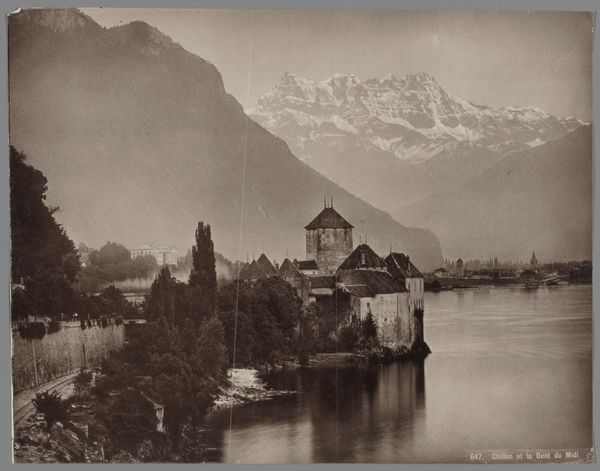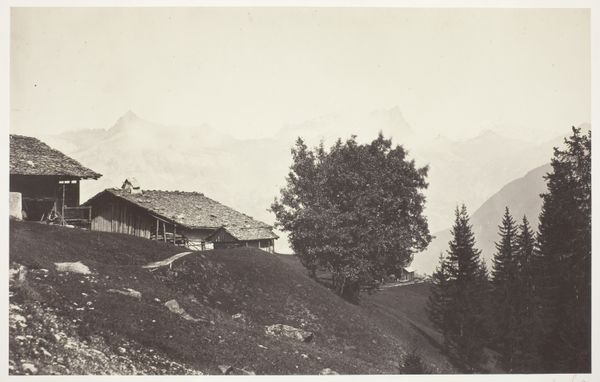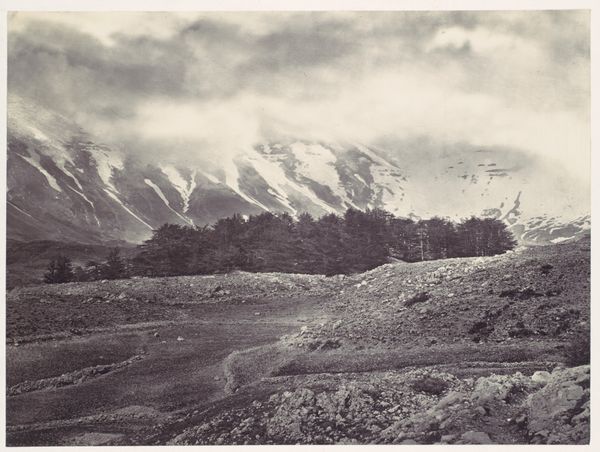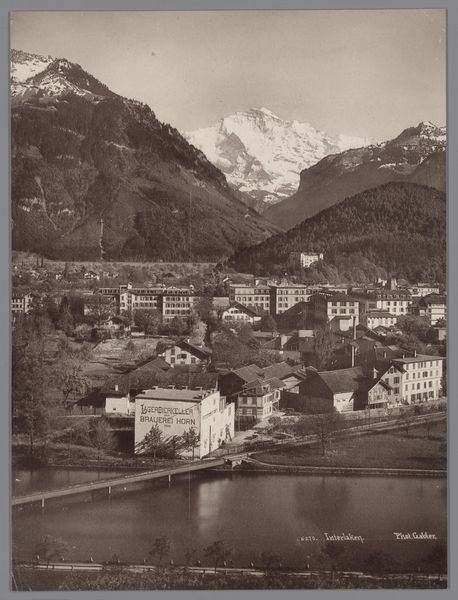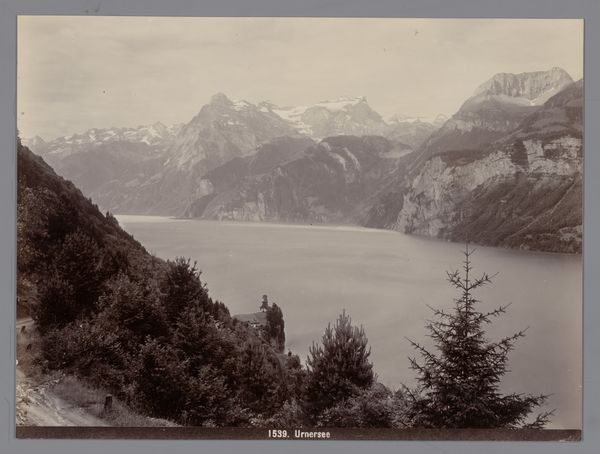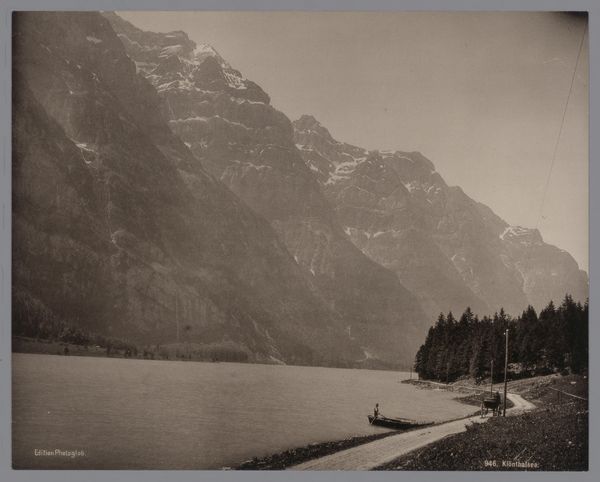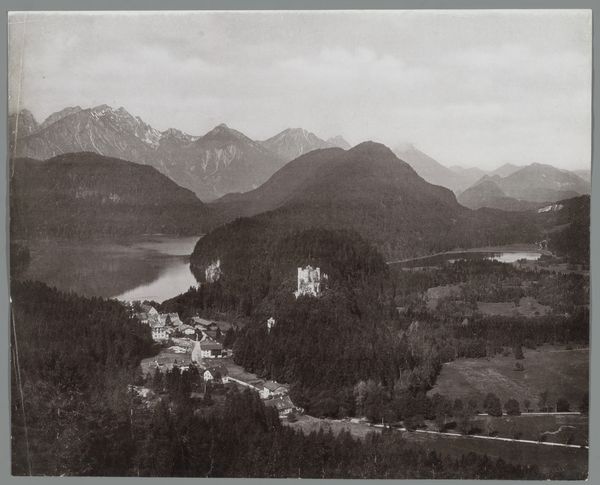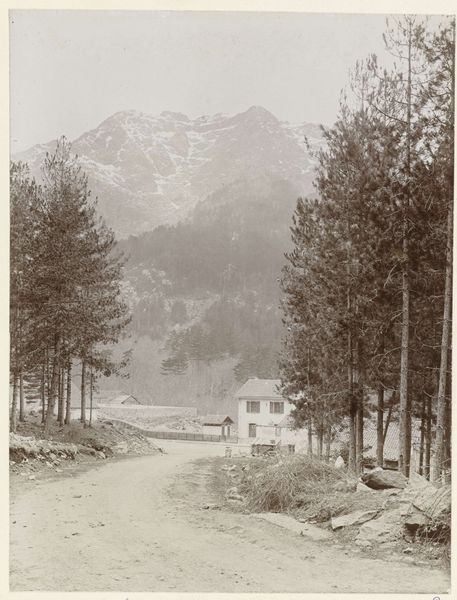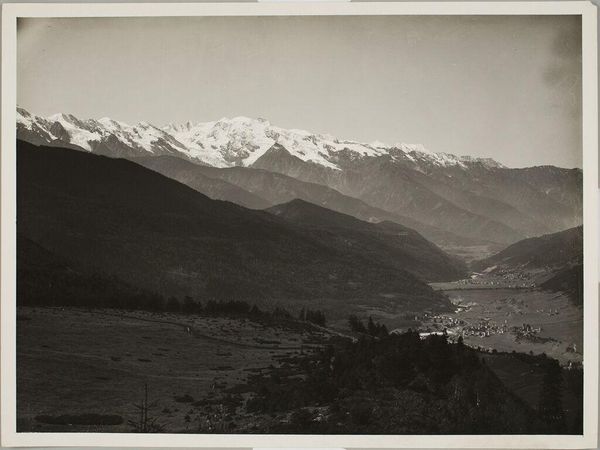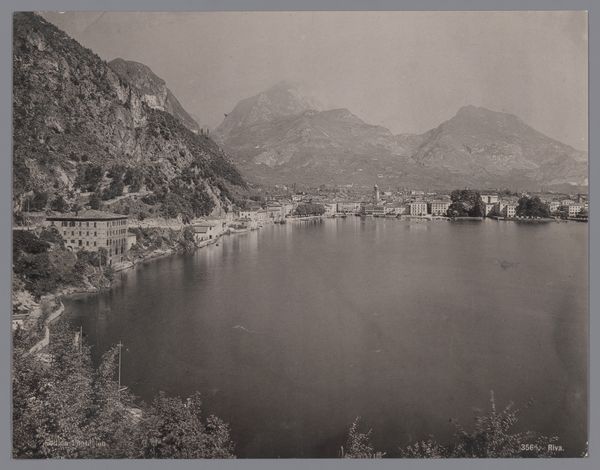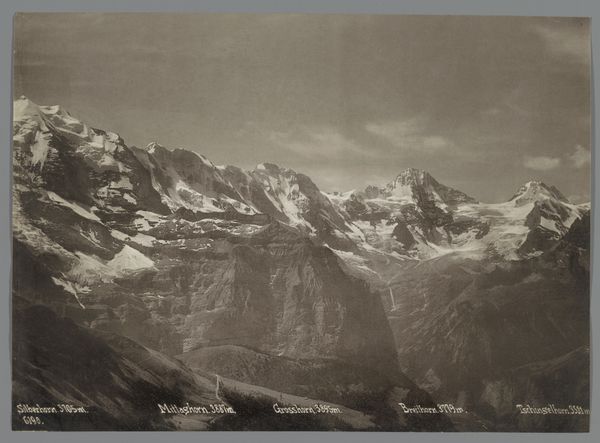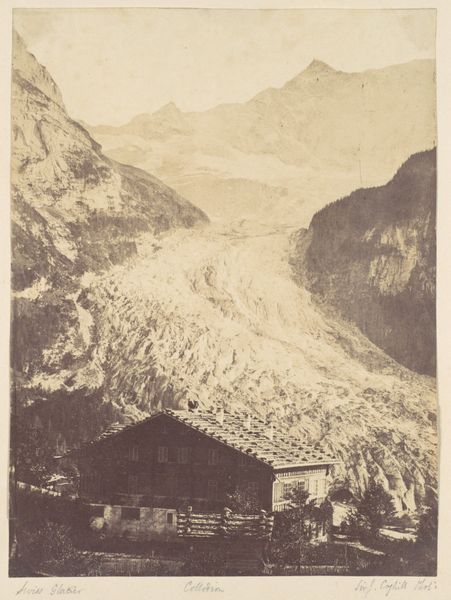
Dimensions: sheet (trimmed to image): 11.2 × 20.6 cm (4 7/16 × 8 1/8 in.) page size: 34.8 × 27.3 cm (13 11/16 × 10 3/4 in.)
Copyright: National Gallery of Art: CC0 1.0
Editor: This gelatin-silver print, titled "From the Höheweg, Interlaken," was taken by Alfred Stieglitz probably between 1894 and 1896. I'm immediately struck by its romantic, almost dreamlike quality. The scene is both grand and serene. How do you interpret this work? Curator: I see a challenge to the dominant narratives of landscape, particularly in its use of Pictorialism and Impressionism. Stieglitz, while seemingly capturing a beautiful scene, subtly questions the role of photography in simply mirroring reality. The soft focus, the deliberate blurring—these are choices that push against the supposed objectivity of the medium. Consider the context: late 19th-century Europe, a time of burgeoning industrialization, rapid urbanization, and colonialism. How does this seemingly tranquil image engage with these complex social realities? Editor: That's a really interesting point about challenging objectivity. It makes me see the photo as less of a passive record and more of an active statement. What specific aspects of the image tie into these larger socio-political contexts? Curator: Think about the concept of "the picturesque" and its association with bourgeois leisure and tourism. The Höheweg, likely a carefully curated viewpoint, caters to a specific kind of gaze. By softening the image, Stieglitz might be hinting at the constructed nature of such viewpoints. And consider who had access to such scenes, to the privilege of experiencing and photographing them. Whose stories are being told, and whose are being left out? Editor: So, it's not just a landscape, but a commentary on who gets to appreciate and depict the landscape. That opens up a whole new layer of understanding. Curator: Exactly. Stieglitz isn’t just showing us a view; he’s asking us to consider the power dynamics inherent in viewing itself. This moves the photograph away from a simple, aesthetic pleasure and positions it within a complex social framework, forcing us to consider questions of access, privilege, and representation. Editor: I never would have looked at a landscape photo in this way. Thanks for opening my eyes! Curator: And thank you for bringing your curiosity. Art, especially photography, rarely offers easy answers, but engaging with its questions can reveal profound truths about ourselves and our world.
Comments
No comments
Be the first to comment and join the conversation on the ultimate creative platform.

